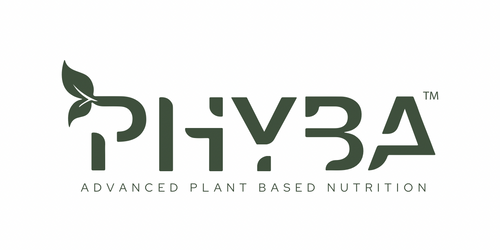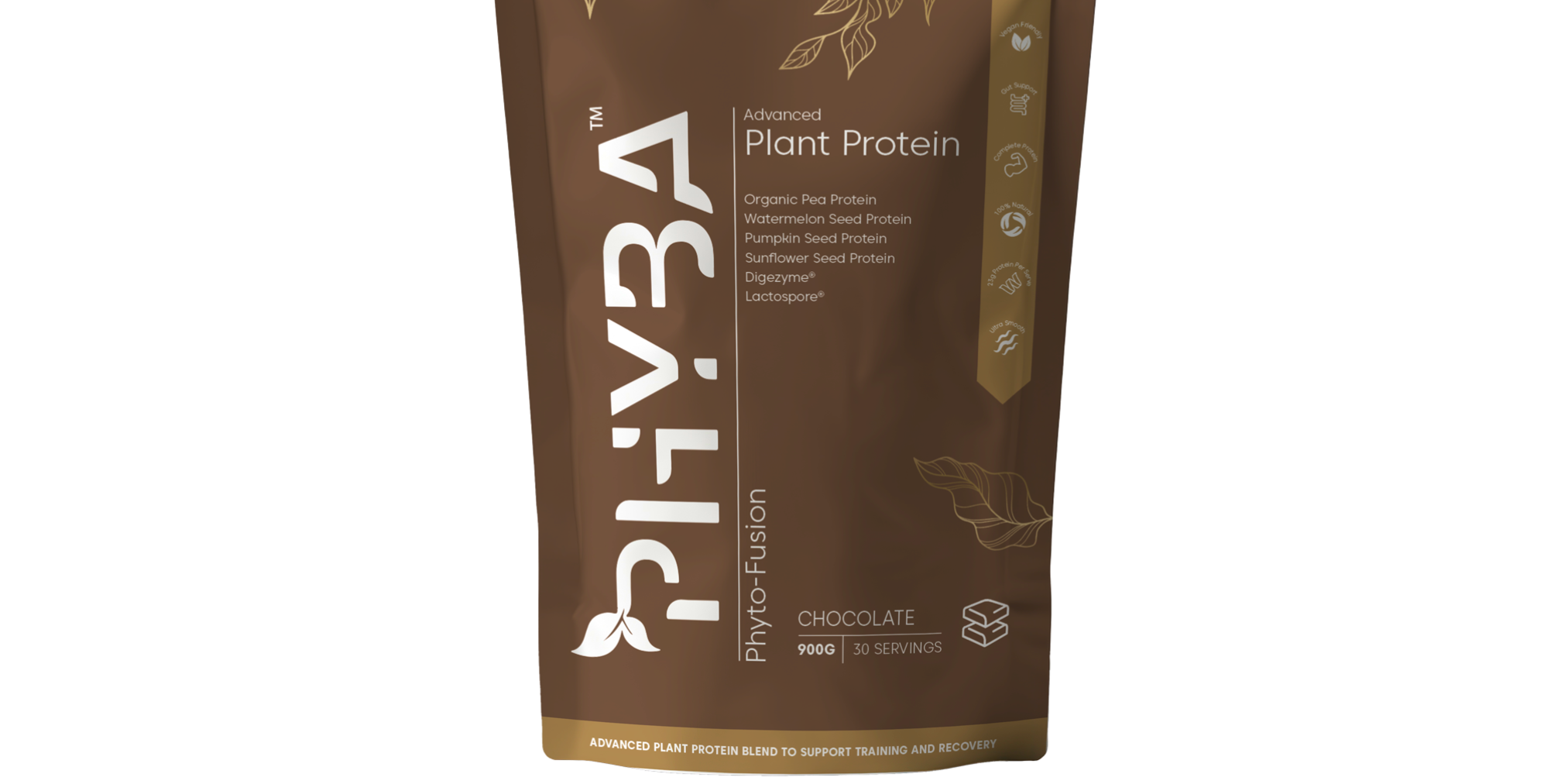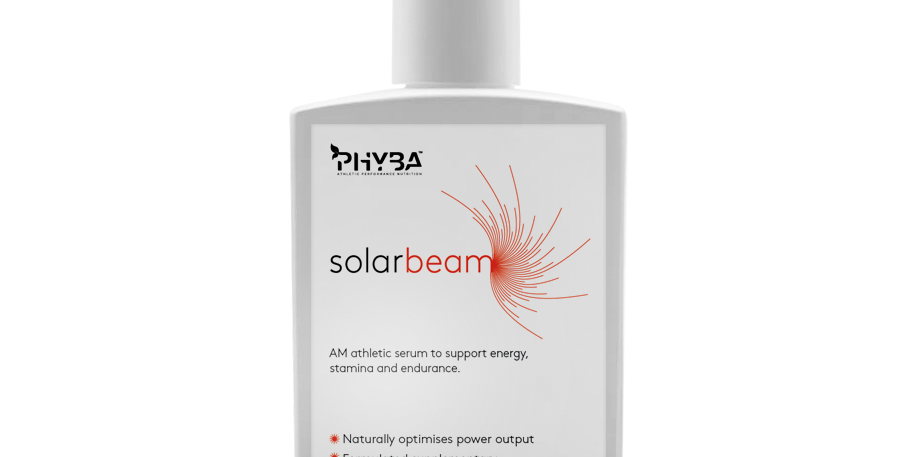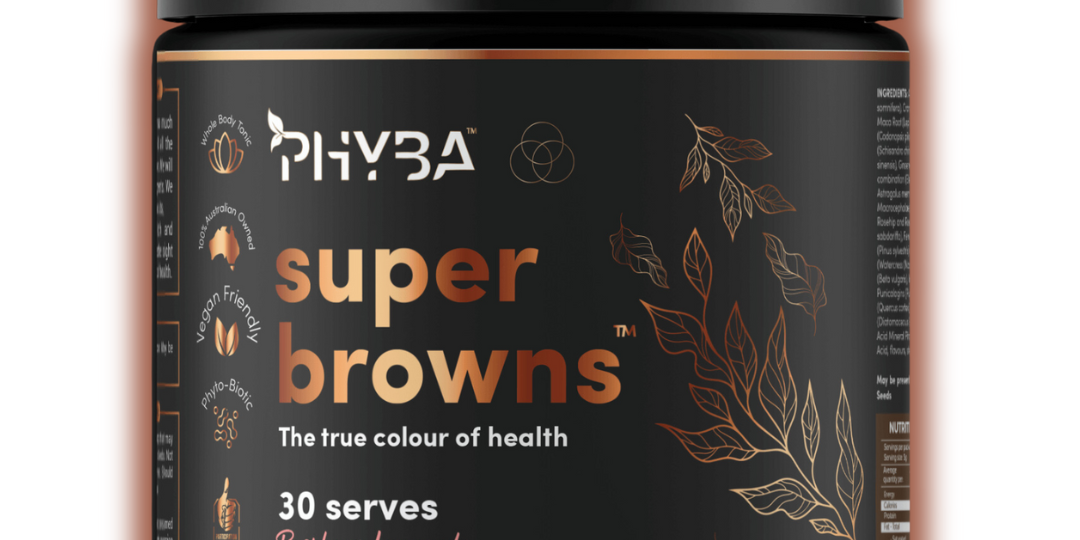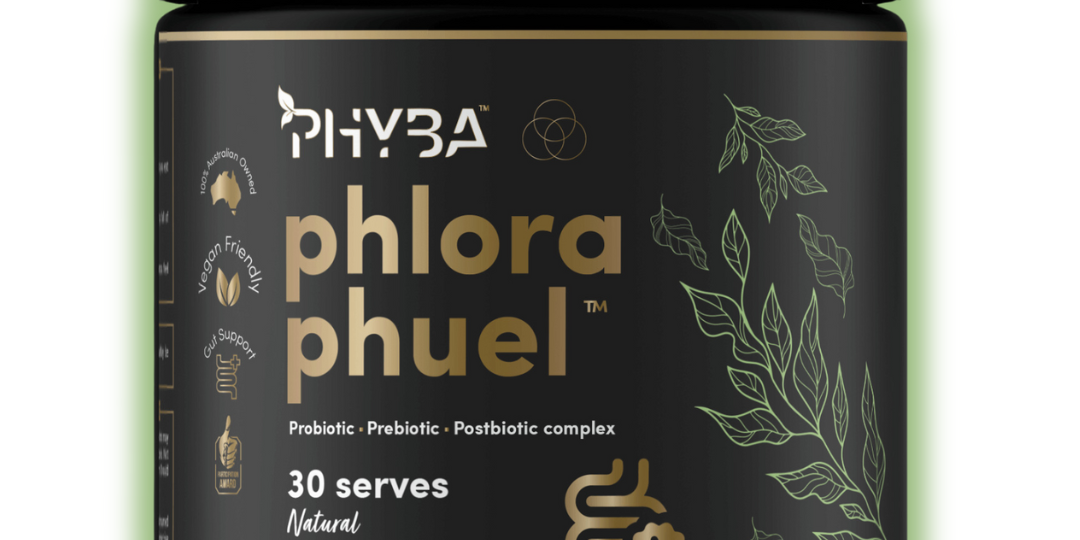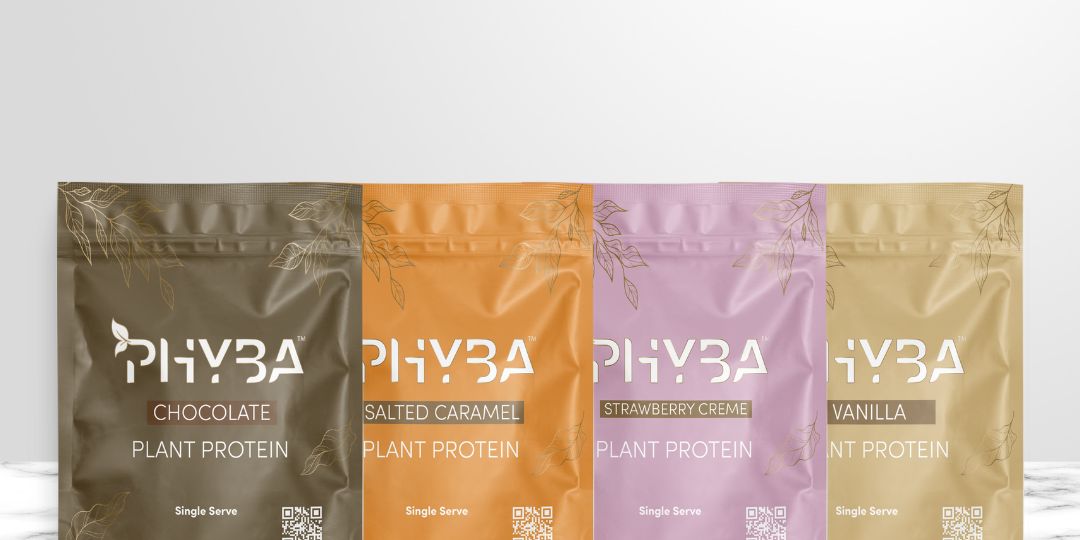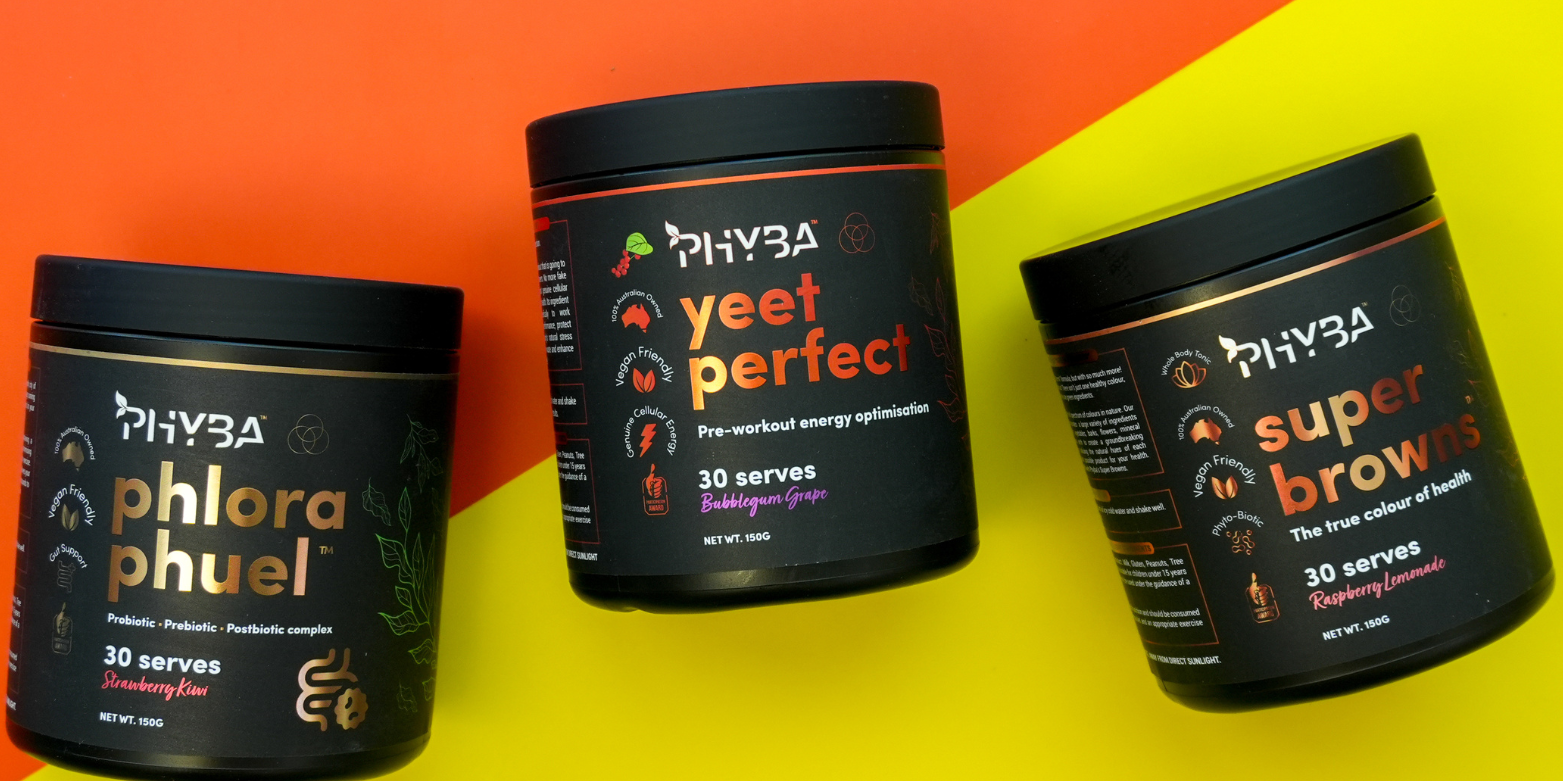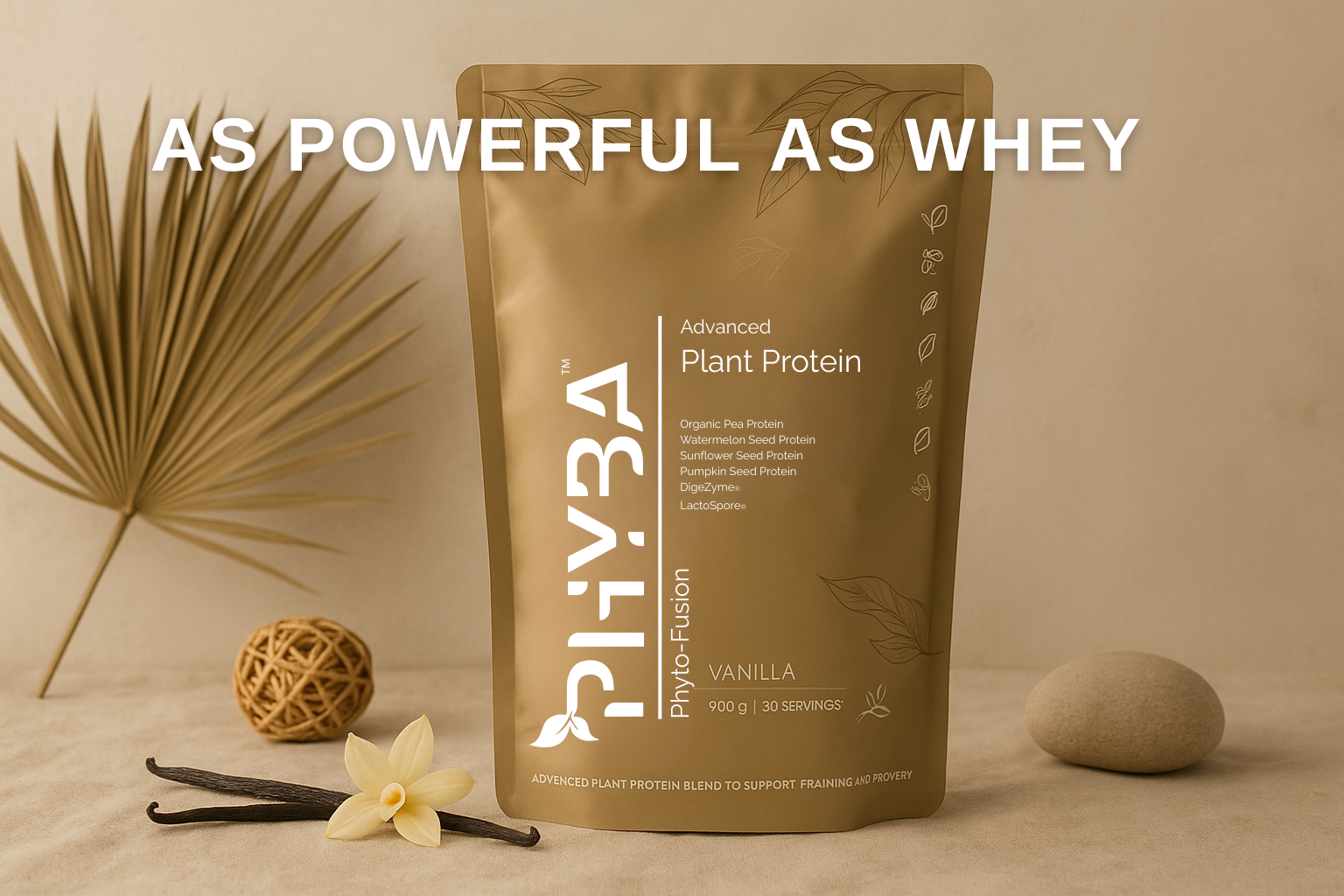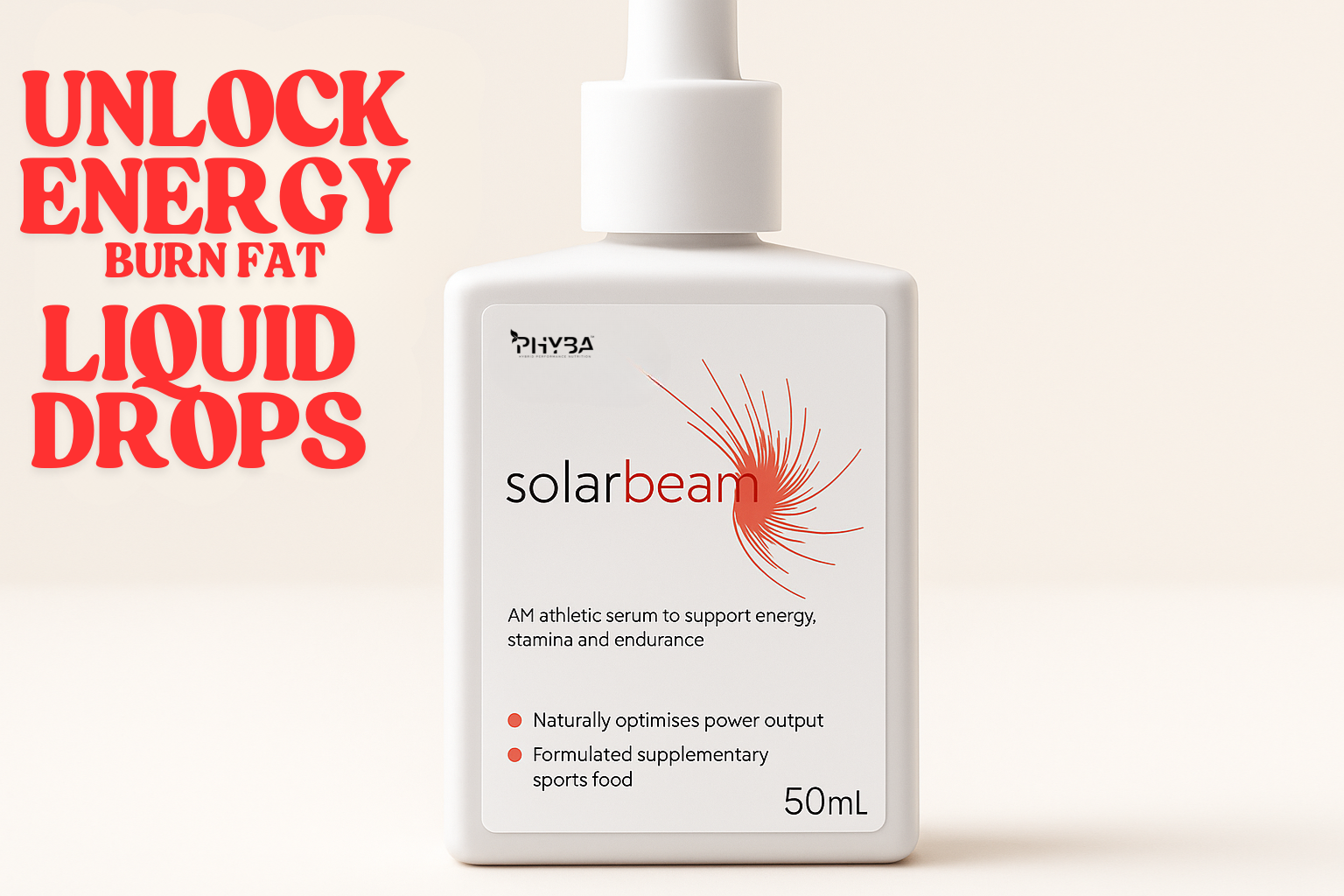Fueling Hybrid Athletes: How Much Protein You Need (and Why Phyba’s Plant Protein Delivers)
Hybrid athletes – especially those of us training for HYROX – put our bodies through a unique mix of strength and endurance work. As the creator of Phyba Phyto-Fusion Plant Protein and a fellow athlete, I know firsthand how critical protein is for repairing muscle and accelerating recovery after these intense training sessions. In this post, I’ll break down exactly how much protein you need based on your training intensity (low, moderate, or high), backed by the latest sports nutrition research. I’ll also share why I formulated Phyba’s quad-blend plant protein to meet these needs – rivaling (and even exceeding) whey protein in effectiveness – while being 100% plant-based and gut-friendly. Let’s dive in!
Why Protein Intake Matters for HYROX and Hybrid Training
Intense workouts – whether weightlifting, running, or functional circuits – cause muscle fibers to break down. Protein provides the amino acids needed to rebuild those fibers, making you stronger and fitter. Getting enough protein ensures you maintain a positive muscle protein balance, where muscle protein synthesis (building) outpaces breakdown pmc.ncbi.nlm.nih.govpmc.ncbi.nlm.nih.gov. If you skimp on protein, especially when training hard, your body can’t effectively repair and grow muscle, and your recovery and performance suffer.
It’s well established that the standard RDA of 0.8 grams of protein per kilogram of body weight (0.8 g/kg) is just a minimum to prevent deficiency – and it’s geared toward sedentary folks canr.msu.edu. Athletes need significantly more. In fact, current evidence shows physically active individuals should consume about 1.2–2.0 g/kg daily to optimize performance and body composition canr.msu.edu. That range accounts for different training demands – as your training intensity and frequency increase, so does your protein requirement canr.msu.edu. In the next sections, we’ll translate that into practical targets for low, moderate, and high training intensities.
Protein Needs by Training Intensity
Your protein needs aren’t one-size-fits-all – they scale up with the intensity, volume, and goal of your training. Below, I break down guidelines (in grams of protein per kilogram of body weight, g/kg BW) for three scenarios: low, moderate, and high training intensity. Remember, these are daily totals; for best results, spread your protein across meals (e.g. 20–40 g per meal) to maximize muscle protein synthesis jissn.biomedcentral.com.
Low Intensity / Lighter Training Phases (≈1.0–1.2 g/kg)
Even on lighter training days or deload weeks, you still need adequate protein to preserve muscle and support recovery – though not as much as during hardcore training. For athletes doing low-intensity or low-volume training (think: casual fitness routines, technique work, or early off-season), aim for roughly 1.0–1.2 g of protein per kg of body weight per day. This is a step above the general RDA, ensuring you’re giving your muscles enough fuel to repair minor exercise-induced damage.
Example: A 70 kg athlete in a light training phase would target ~70–84 g of protein per day.
Research shows that recreational endurance athletes (exercising a few times a week at low intensity) have protein needs similar to or slightly above sedentary individuals – around 0.8–1.0 g/kg germanjournalsportsmedicine.com. For most active adults, 1.2 g/kg is a sensible minimum to maintain muscle mass and be ready for when training ramps up canr.msu.edu. Hitting this “low-intensity” target helps prevent muscle loss and keeps recovery on track, even when workouts are easy.
Moderate Intensity / Regular Training (≈1.4–1.6 g/kg)
Most hybrid athletes fall into this category during typical training: you’re working out almost daily, mixing cardio and strength, but not necessarily doing ultra-endurance or twice-a-day sessions. In these periods of moderate-to-high training load, protein needs increase to support both muscle repair and adaptation (growth). A good target here is about 1.4–1.6 g of protein per kg BW each day pmc.ncbi.nlm.nih.gov. Sports nutrition authorities generally recommend ~1.3–1.8 g/kg for active individuals, with strength/power athletes gravitating to the upper end of that range pmc.ncbi.nlm.nih.gov.
Example: A 70 kg athlete training most days should aim for ~98–112 g of protein daily (around 100+ grams).
At this intake, your body has plenty of amino acids to rebuild muscle fibers damaged by workouts and to add new muscle in response to training. In fact, studies find that resistance-trained athletes see maximal strength gains when consuming around 1.5 g/kg; beyond that, strength gains plateau sportsmedicine-open.springeropen.comsportsmedicine-open.springeropen.com. Similarly, 1.6 g/kg is often cited as enough to maximize muscle growth in most people, with higher amounts yielding diminishing returns sportsmedicine-open.springeropen.com. In short, about 1.5 g/kg is the sweet spot for many athletes during moderate training – it covers the bases for muscle repair, growth, and recovery.
High Intensity / Heavy Training Blocks (≈1.6–2.2 g/kg)
During intense training cycles – think competition prep, twice-daily workouts, high-mileage endurance combined with heavy lifts, or periods of caloric deficit – protein becomes even more critical. Here I recommend pushing toward the high end of intake, ~1.6 up to 2.0+ g/kg. Consuming around 2.0 g/kg (or roughly 0.9 g/lb) helps ensure you’re protecting muscle mass and optimising recovery when your body is under heavy stress canr.msu.educanr.msu.edu. Some HYROX and hybrid coaches even suggest ~0.8–1.0 grams per pound of body weight for hard-training athletes, which is about 1.8–2.2 g/kg vtlzr.coboxnutrition.co.uk.
Example: A 70 kg athlete in an intense training block or cutting phase might shoot for ~112–154 g protein per day (e.g. ~130 g as a middle ground).
Why go this high? During brutal training, muscle breakdown is greater and you’re often training again before fully recovered – ample protein helps speed repair of muscle fibers so you can hit your next session hard. Higher protein (toward 2 g/kg) is also beneficial when you’re dieting/in a calorie deficit, as it helps preserve lean mass canr.msu.edu. And for masters athletes on the upper end of our age range (40s-50s), a higher protein intake can counter age-related declines in muscle protein synthesis efficiency jissn.biomedcentral.com – essentially helping overcome the body’s “anabolic resistance” by flooding muscles with nutrients (particularly the key amino acid leucine, discussed later).
It’s important to note that while 1.6–1.8 g/kg is sufficient for most people to maximize muscle gains, intakes up to ~2.2 g/kg aren’t uncommon among elite athletes as a buffer during extreme training canr.msu.edu. There’s no harm in these higher amounts for healthy individuals – the excess isn’t magically turning into extra muscle, but it can ensure you’re never falling short. The bottom line: the more intense and frequent your training, the closer to ~2 g/kg (or even a full 1 g/lb) your daily protein should be.
To recap these recommendations, here’s a quick comparison:
| Training Intensity | Protein Target (g per kg BW) | Who/When |
|---|---|---|
| Low (Light activity or off-days) | ~1.0–1.2 g/kg | Recreational training, deload phases, skill work. Supports basic recovery and maintenance. |
| Moderate (Regular training) | ~1.4–1.6 g/kg | Consistent hybrid training (most days). Optimizes muscle repair and modest growth. |
| High (Intense or high volume) | ~1.6–2.0+ g/kg | Heavy training cycles, two-a-days, or cutting weight. Maximizes recovery and muscle retention under stress. |
These guidelines are backed by robust research and expert consensus. For instance, a joint position paper from the ACSM and nutrition societies recommends ~1.2–2.0 g/kg for athletes, with the upper end (around 2.0 g/kg) reserved for periods of intense training or calorie restriction canr.msu.edu. Likewise, sports nutrition researchers suggest 1.3–1.8 g/kg for most athletes, and up to ~2.2 g/kg if aiming to maximize gains or during extreme training pmc.ncbi.nlm.nih.govboxnutrition.co.uk. By hitting the appropriate level for your training load, you’ll give your muscles the building blocks they need to recover faster, grow stronger, and be ready for the next challenge.
(And if you’re wondering, “Can I really eat too much protein?” – the main downside of excess protein is that it might crowd out other nutrients or calories. There’s no evidence of harm in healthy people from the ranges above; your body will simply use what it needs and burn or excrete the rest. More isn’t necessarily better for muscle, but slightly over target won’t hurt.)
Phyba Phyto-Fusion: A Protein Designed for Hybrid Athletes
Alright, so we’ve established how much protein you likely need – now let’s talk about where that protein comes from. As a hybrid athlete myself, I formulated Phyba Phyto-Fusion Plant Protein to check all the boxes for optimal recovery and muscle building. It wasn’t enough to just be a vegan protein – I wanted it to truly rival the best whey proteins on the market in terms of aiding muscle growth, while also offering benefits unique to a plant-based formula (like being easier on the gut and packed with micronutrients). Here’s how Phyba’s protein stands out:
Quad-Blend of Plant Proteins for a Complete Amino Acid Profile
Instead of relying on one protein source, Phyba Phyto-Fusion uses a quad-blend of organic plant proteins: pea, watermelon seed, pumpkin seed, and sunflower seed. Why four sources? By combining complementary proteins, we achieve a complete amino acid profile that covers all the essential amino acids (EAAs) your muscles need phyba.com.au. Most single plant proteins are missing one or two EAAs or have them in low amounts, but the mix of pea, watermelon, pumpkin, and sunflower balances each other out. This means Phyba provides all the building blocks for muscle repair and growth, similar to a high-quality animal protein twl.com.au.
Pea protein is the backbone of our blend – it’s rich in branched-chain amino acids (BCAAs) like leucine and has been shown in studies to be as effective as whey for building muscle when consumed in adequate amounts phyba.com.auphyba.com.au. The other plant proteins each bring something to the table: watermelon seed protein adds amino acids like glutamine and citrulline (great for endurance and blood flow), pumpkin seed protein contributes high levels of methionine and cysteine plus minerals like zinc for recovery, and sunflower seed protein provides plenty of isoleucine and threonine along with natural antioxidants (vitamin E)phyba.com.auphyba.com.au. In essence, this four-protein combination gives you a broad-spectrum amino acid intake, akin to what you’d get from a diversified omnivorous diet – all in one shake.
High in BCAAs (Especially Leucine) – Just Like Whey
One of my priorities was ensuring Phyba’s protein stimulates muscle protein synthesis (MPS) as robustly as whey or other animal proteins. The key there is a high content of BCAAs, particularly leucine. Leucine is the amino acid that acts as a trigger for MPS – you need about 2–3 grams of leucine in a dose of protein to maximally stimulate muscle-building after a workout jissn.biomedcentral.com. Many plant proteins on their own have slightly lower leucine levels, but Phyba’s blend is formulated to be leucine-rich. Each serving (23 g protein) contains a high concentration of leucine – we made sure it hits that critical threshold comparable to whey protein’s leucine content enhancednutritionblaxland.com.au. In fact, pea protein (our main ingredient) naturally has a BCAA profile similar to whey, and when combined with the other proteins, it yields an amino acid profile that rivals animal-based proteins in quality and effectiveness twl.com.au.
What does this mean for you? It means that a scoop of Phyba Phyto-Fusion will flip the same “growth switch” in your muscles as a scoop of whey would. Scientific studies support this: research has found that plant proteins like pea can produce equal gains in muscle thickness and strength compared to whey when matched for total protein intake pmc.ncbi.nlm.nih.govpmc.ncbi.nlm.nih.gov. In one 12-week study, participants taking pea protein had similar muscle growth to those taking whey – no significant differences between the two groups pmc.ncbi.nlm.nih.gov. This reinforces that it’s the amino acid profile and getting enough total protein that matters, not whether it comes from a cow or a plant. I formulated Phyba to ensure no compromises on those muscle-critical aminos. So, hybrid athletes can confidently use this plant-based protein and know they’re getting the same muscle-building benefits as they would from whey – with some extra perks we’ll talk about next.
Enhanced Digestion and Nutrient Absorption (No More Bloating)
Many athletes (myself included) struggle with digestion when using conventional protein powders – bloating, gas, or an upset stomach can really put a damper on your training, especially if you’re bouncing between strength work and cardio. One big advantage of Phyba’s plant-based formula is that it’s incredibly gut friendly: it’s free of dairy, lactose, and other common irritants, and it’s fortified with special ingredients to aid digestion. We included a proprietary DigeZyme® enzyme blend and LactoSpore® probiotic to replace what used to be our “Gut Matrix” – these work synergistically to make the protein easier to digest and to improve nutrient uptake phyba.com.au.
DigeZyme® is a mix of digestive enzymes (like proteases, amylase, lipase, etc.) that help break down protein, carbs, and fats. When you ingest Phyba, these enzymes go to work to quickly hydrolyze the protein into smaller peptides and amino acids. This means faster and more complete absorption of the protein, and less chance of GI discomfort (since there’s less undigested residue to cause bloating). LactoSpore® is a spore-forming probiotic (Bacillus coagulans) that survives the journey through the stomach and germinates in the intestine, where it supports a healthy gut environment and further aids digestion. Probiotics like Bacillus coagulans have been shown in studies to improve protein utilization – for example, adding them to a protein supplement led to higher blood amino acid levels, indicating better absorption nutritionandmetabolism.biomedcentral.com. By incorporating LactoSpore®, we’re essentially helping your gut flora help you – it can reduce issues like bloating and enhance the breakdown of protein and other nutrients in the gut.
The net effect: Phyba Phyto-Fusion is easy on the stomach and optimized for absorption. You get more out of each gram of protein you consume. There’s even aloe vera and other prebiotic fibers in the formula that soothe the gut and feed healthy bacteria (we carried over some elements of our original Gut Matrix concept)twl.com.au. All of this means you can slam a shake post-workout or even before a cardio session without fear of an upset stomach. As an athlete juggling strength and endurance training, I know gut comfort is gold – the last thing you want is a protein shake sloshing around or causing distress during a run or MetCon. Phyba was built to eliminate those issues, so you can focus on training and recovering, not running to the bathroom.
A Plant Protein That Rivals (and Even Exceeds) Whey
When all these features come together – a complete EAA profile with high leucine, enhanced digestibility, and added functional nutrients – you get a plant-based protein that can genuinely rival whey in effectiveness for muscle building and recovery. In some ways, it can exceed whey’s benefits for hybrid athletes. Here’s why:
-
Comparable Muscle Gains: As highlighted earlier, a well-formulated plant protein can stimulate muscle growth just as well as whey. Phyba’s protein provides the crucial amino acids (like leucine) in ample amounts to maximally stimulate MPS after your workouts twl.com.aupmc.ncbi.nlm.nih.gov. You’re not missing out on any gains by choosing plant over whey – studies confirm pea and whey result in similar strength and hypertrophy outcomesover time pmc.ncbi.nlm.nih.gov. So performance-wise, it’s a match.
-
Gut and Recovery Benefits: Where a great plant protein can exceed whey is in the overall recovery experience. Phyba’s blend is loaded with extras that support recovery: natural anti-inflammatories and antioxidants from the plant ingredients (sunflower seed’s vitamin E to combat exercise-induced oxidative stress, for example phyba.com.au), plus the digestive aids for better nutrient delivery. It’s also free from lactose and easily digestible, meaning no bloating, no cramps, and better hydration (since you’re not dealing with stomach issues). A happy gut can improve nutrient absorption and even immune function, which keeps you training consistently.
-
Allergy- and Sensitivity-Friendly: Being dairy-free and 100% plant-based, Phyba is suitable for those who can’t tolerate whey or prefer to avoid animal products. “Gut-friendly” isn’t just a buzzword – each serving is designed to be gentle. The protein is ultra-fine milled for a smooth texture and uses natural aroma oils for flavor (no artificial sweeteners or fillers that could irritate)phyba.com.auphyba.com.au. Many athletes with sensitive stomachs simply feel better recovering with plant protein, and when it’s as high-quality as this, they aren’t sacrificing any results.
-
Nutrient Density and Health: Our quad-blend brings along vitamins, minerals, and phytonutrients inherent to the plant sources – like zinc and magnesium from pumpkin seeds, or the citrulline from watermelon seeds – which support overall health and training performance. Whey is great for muscle, but it doesn’t offer much beyond protein. Phyba provides protein plus additional nutrients that can aid muscle repair, hormone balance, and endurance. It’s essentially a protein and recovery supplement in one.
As the product creator, I genuinely believe (and have seen with countless athletes) that a well-formulated plant protein can go toe-to-toe with whey. When you factor in the digestion and health aspects, it can even come out on top for hybrid athletes who need to perform across different disciplines. By using Phyba Phyto-Fusion after a grueling HIIT + running session or as a daily shake, you’re giving your body high-octane fuel to repair muscle fibers, replenish amino acids, and fortify your system for the workouts ahead.
Putting It All Together
Training for hybrid events like HYROX demands a smart nutrition strategy. Hitting your protein target – whether ~1.2 g/kg on a lighter day or ~2 g/kg during peak training – will support muscle growth, speed up recovery, and protect your gains as you push your limits. Think of protein as the rebuild material your body uses each day to adapt to the stress of training. If you supply enough of it (with timing that fits your schedule), you set yourself up for consistent progress and better performance.
Personally, after years of experimenting with different diets and supplements, I crafted Phyba’s Phyto-Fusion Plant Protein to be the ultimate recovery ally for athletes like us. It checks all the scientific boxes: ample EAAs and BCAAs for muscle repair twl.com.au, enhanced digestibility for quick absorption phyba.com.au, and a nutrient boost for overall resilience. Plus, it’s something you can feel good about putting in your body – organic, plant-based, and free of junk. I take pride in knowing that each scoop helps hybrid athletes train hard and recover smarter.
In summary, dial in your protein, dial in your recovery. Use the guidelines here to match your protein intake to your training intensity, and consider giving Phyba Phyto-Fusion a try as part of your routine. With the right protein and nutrition on your side, you’ll bounce back faster from those killer workouts and be ready to tackle whatever tomorrow’s training throws at you. Keep training hard, fuel up wisely, and I’ll see you out there crushing it!
